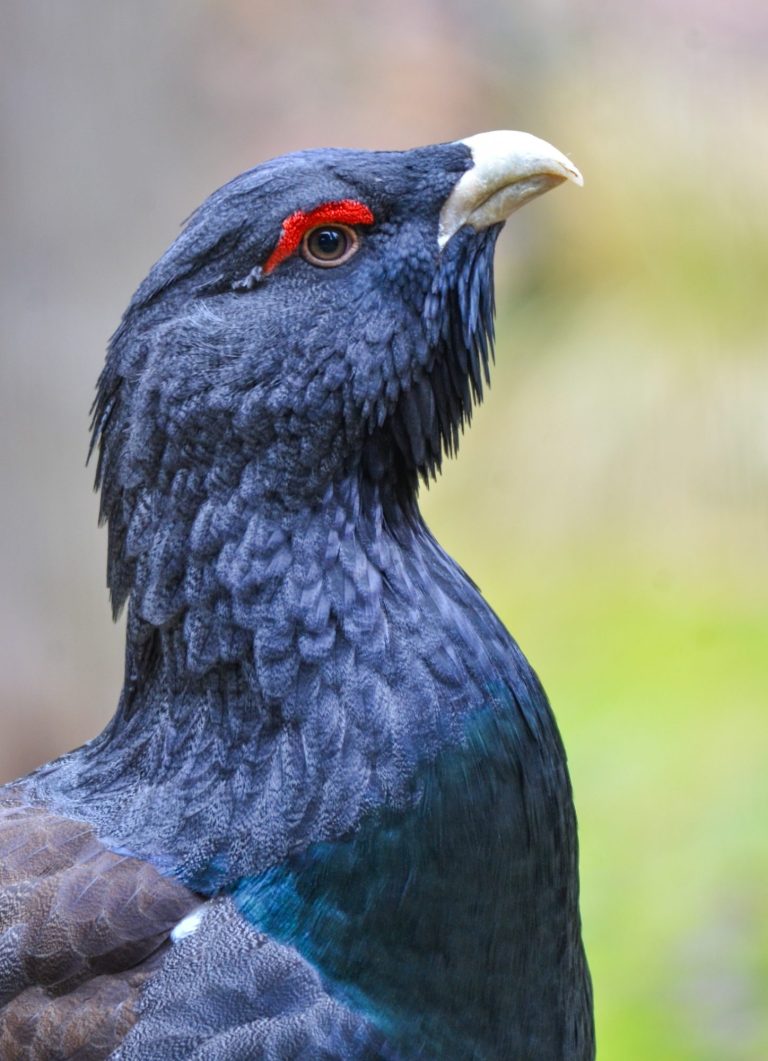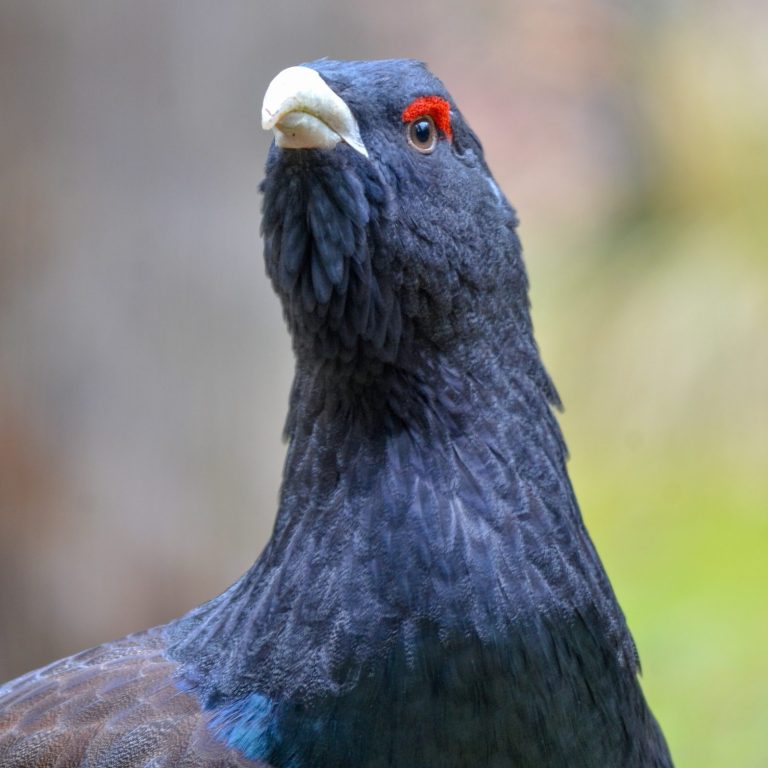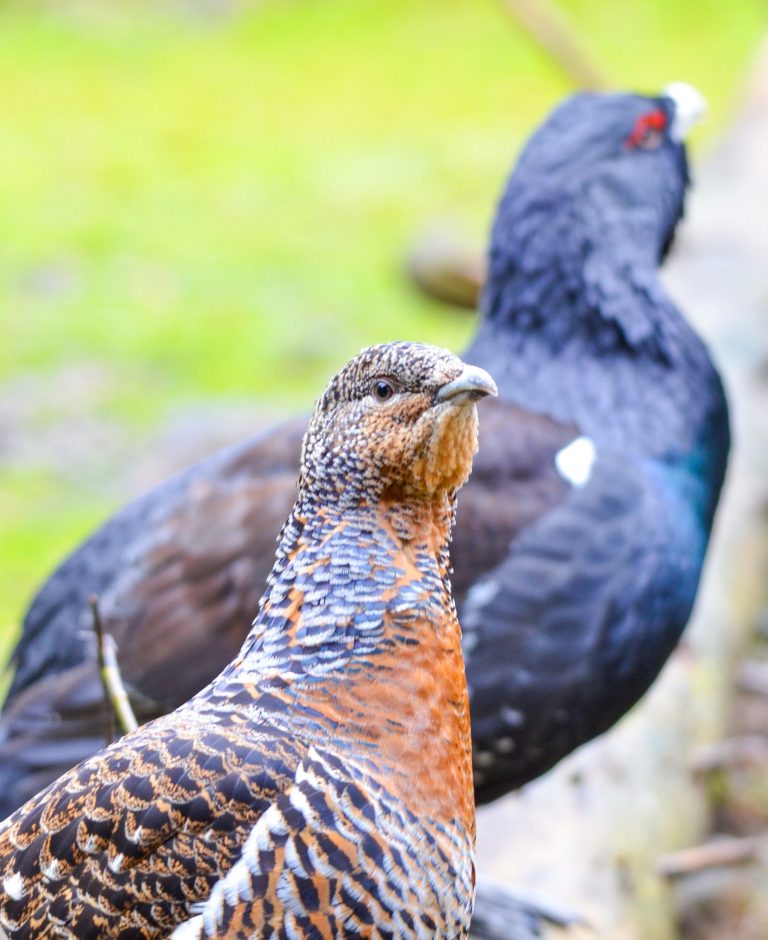
The Phantom - tracing memories in the Black Forest
April
2025
Its imposing appearance once shaped the image of the Black Forest - a true landmark of the region. Today, only the names of numerous hiking trails and restaurants bear witness to the former presence of the “primeval bird”.
For me, the Capercaillie remains a phantom - I have never managed to spot it in the wild. My grandfather, once active as a nature conservation warden, often talked about this special bird. His stories are deeply rooted in my memory - and have stayed with me over the years.
In 2024, 111 mating capercaillies were counted in the Black Forest - a slight increase on the previous year, when 106 cocks were recorded. The hens can hardly be observed during the mating season, but it is assumed that the sex ratio is balanced. Despite this encouraging development, a look at the past is sobering: in 2014, the number was still 260 cockerels. Today, the total population is estimated at around 220 animals - a significant decline that shows how fragile the survival of this species in the Black Forest has become.
So I seized the opportunity to take part in a courtship interrogation in the Upper Black Forest. A search for clues - not only for the capercaillie, which has always been rooted here, but also for a piece of my own heritage.
The counts are carried out as part of a mating ground monitoring program in which hunters, foresters, ornithologists and experts from the FVA-Wildlife Institute and the Black Forest National Park work together. These monitoring measures are crucial for the protection and long-term stabilization of the capercaillie population in the Black Forest.
Between fog and hope
Shortly after seven o'clock - a sudden rustling behind me, something flies loudly and hastily into the trees. A fly-in? My companion and habitat keeper Benjamin, had said: "If it's coming, it's unmistakable.” I scan the treetops in my field of vision with binoculars - but nothing. Was it just my imagination?
Fifteen minutes later, a hare hops through the undergrowth. A little later still, I spot an old roebuck calmly grazing. Otherwise: silence.
8:45 p.m. - “oart oart-oart-oart”. A woodcock mates across the clearing, then silence returns until the call of the Tawny Owl echoes through the darkness. The fine drizzle turns to snow, the cold creeps into your bones. With each passing minute, the hope of the longed-for sight fades. But we persevere.
Unfortunately, luck was not on our side: neither that night nor the following morning did we see a capercaillie. Yet it was precisely in this corner that sightings had last been reported and droppings found.
The decline of this fascinating bird species is man-made - due to habitat loss, fragmentation of the landscape and increasing recreational pressure. The local association "Auerhuhn Schwarzwald" has been working for years to preserve the now rare grouse. With the help of careful monitoring, targeted habitat management, guided visitor flows and conservation measures - in close cooperation with foresters, volunteers and scientists - capercaillie-friendly forest use is made possible.


Where hope takes flight
These efforts are having an effect: the population has recovered slightly in recent years. Raising public awareness is also a key element of their work.
The attempt to preserve the capercaillie in the Black Forest is not only a highly symbolic project, but also an example of how we can achieve great things on a small scale. I would therefore like to take this opportunity to pay special tribute to the valuable work of the association "Auerhuhn Schwarzwald".
Even though this monitoring did not result in any sightings, it fills me with pride to have been part of a commitment that has an impact beyond the moment. I will continue to campaign for the protection of this fascinating species - for the capercaillie and its habitat in the Black Forest, which is also a piece of home.
© Copyright: Petra K.-S. All rights reseved.
Wir benötigen Ihre Zustimmung zum Laden der Übersetzungen
Wir nutzen einen Drittanbieter-Service, um den Inhalt der Website zu übersetzen, der möglicherweise Daten über Ihre Aktivitäten sammelt. Bitte überprüfen Sie die Details in der Datenschutzerklärung und akzeptieren Sie den Dienst, um die Übersetzungen zu sehen.